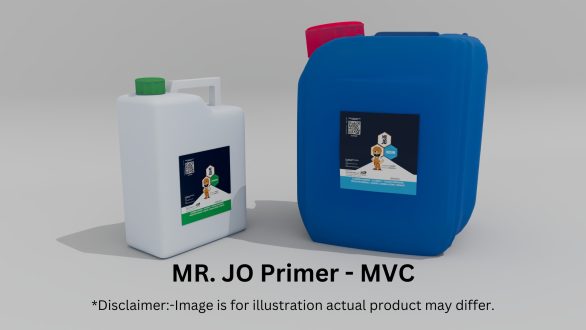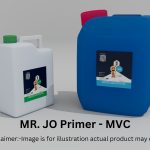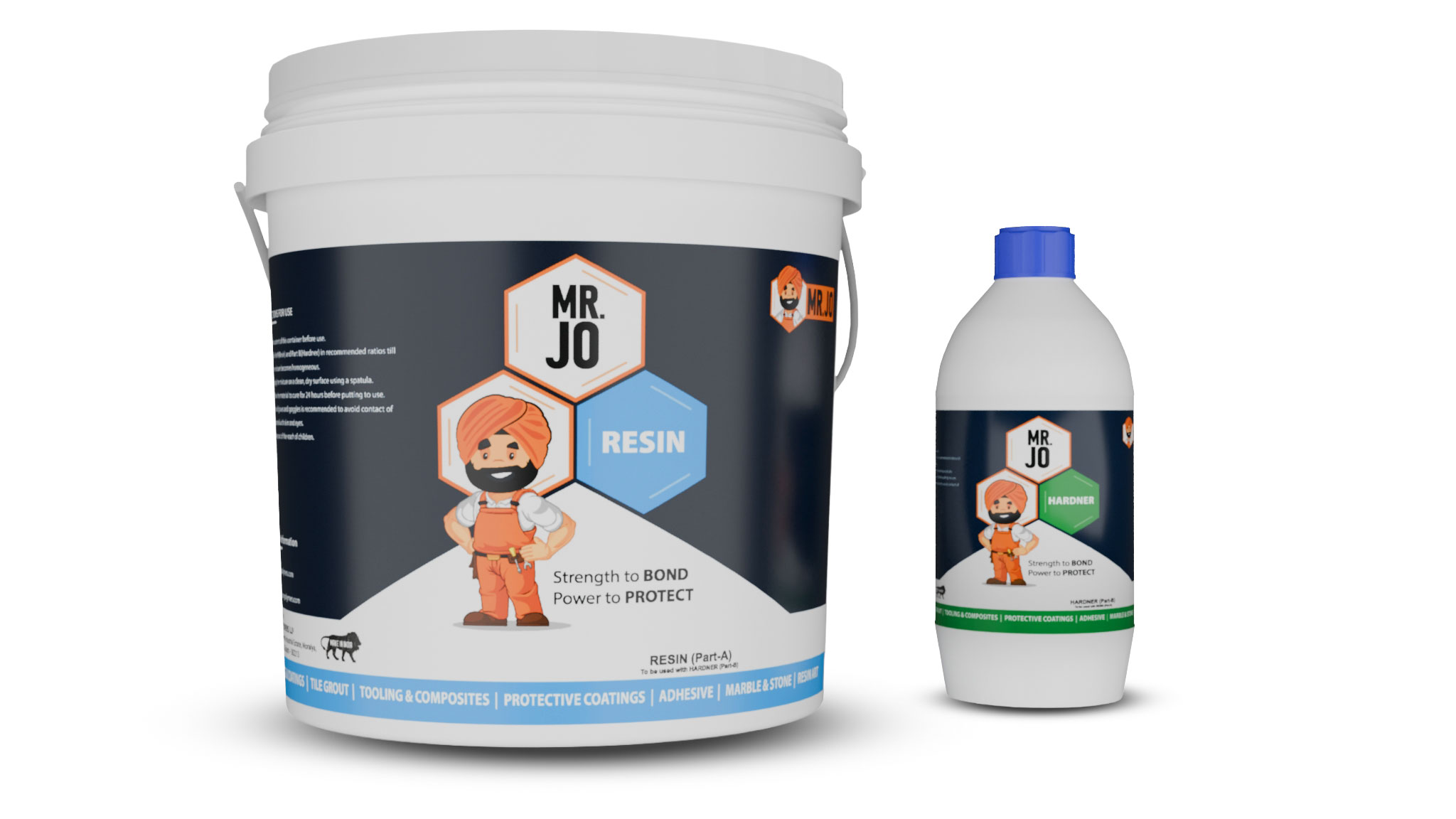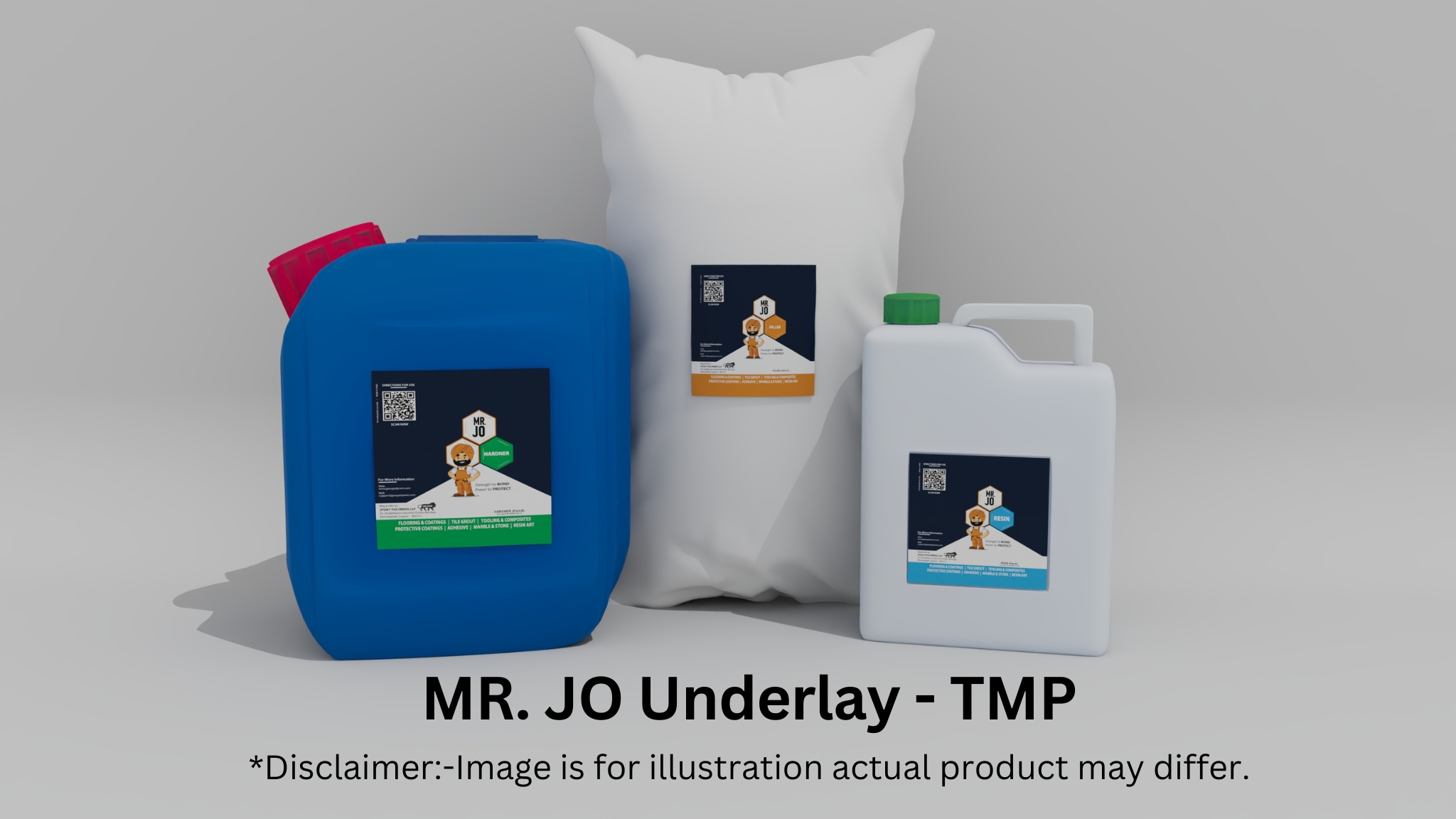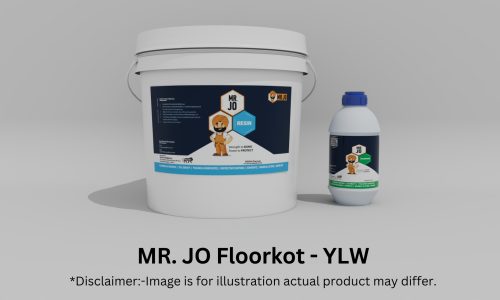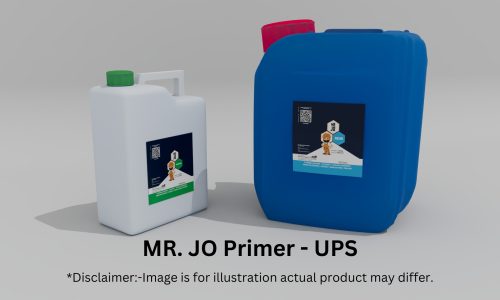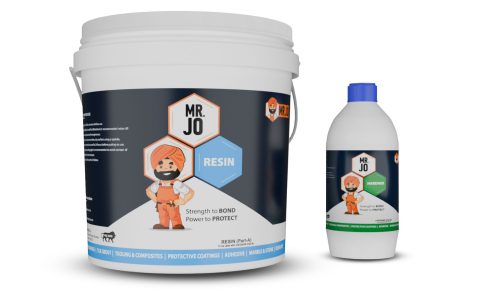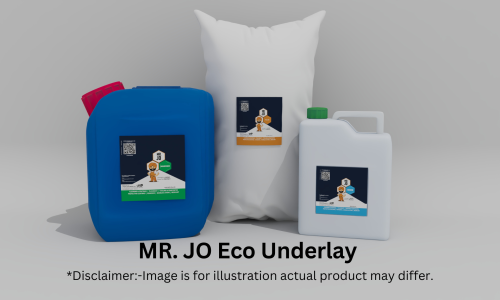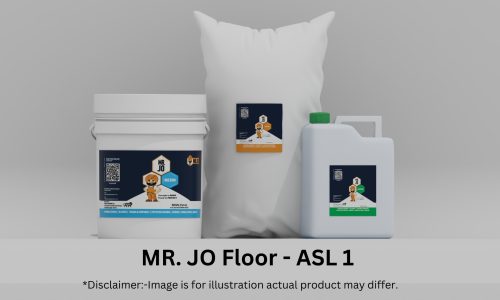MR. JO Primer-MVC
₹4,009.00 – ₹15,234.00 Inclusive of all taxes
Two component medium viscosity epoxy primer.
- Description
- Properties
- Applications
- How To Use
- Technical Data Sheet(TDS)
- FAQs
Description
Mr. JO Primer-MVC is a two-part, medium-thick epoxy primer that contains no solvents. Because of this, it works perfectly for jobs that need strong sticking power. Furthermore, it gives excellent strength and resists chemicals very well. As a result, it helps top coatings last longer and stay durable. In addition, it creates a smooth and even surface for bonding.
- Color: Pale yellow
- Pot life @25°C: 120-150 mins
- Mixing Ratio: 100:50 PBW
- Mixture consistency: Medium viscosity liquid
- Coverage: 4 m2/kg
- Optics: : Transparent/Translucent
- Substrate pore sealing
- Adhesion promoter
- Sealer coat
- Surfaces should be freed from laitance and dust by sand-blasting. In case sand blasting is not possible, thorough abrading with a hard wire brush should be preferable.
- Suitable degreasing agent should be used to remove any grease, oil or traces on the surface.
- Surfaces should be freed from laitance and dust by sand-blasting. In case sand blasting is not possible, thorough abrading with a hard wire brush should be preferable. Suitable degreasing agent should be used to remove any grease, oil or traces on the surface.
- Mix the two components together thoroughly for at least 2 minutes so as to achieve uniform mixing and thorough consistency of the mix. Apply the mix using brush or spatula to the pretreated surfaces.
- Allow 4-5 hours for surface to dry and 24 hours to achieve full strength.
A1. Primer – MVC is a two-part epoxy primer designed to be used before applying epoxy floor coatings, underlays, or screeds. It:
- Penetrates and seals concrete surfaces
- Enhances adhesion of subsequent epoxy layers
- Prevents delamination, bubbling, and surface failures
A2. The mix ratio is 100:50 by weight (resin: hardener). Proper mixing ensures complete curing, strong bonding, and maximum surface penetration.
Q3. What makes this primer different from other primers?A3.
- Offers medium viscosity: not too thin or runny, ensuring good coverage and surface wetting
- Designed to work on dry concrete, including old and absorbent substrates
- Most popular primer across your epoxy coating systems for its consistency, reliability, and compatibility
A4. Yes. MR. JO Primer – MVC is comparable in performance to Araldite GY257 with Aradur 140, and meets expectations for professional-grade epoxy priming needs in construction, flooring, and industrial settings.
Q5. How do I apply MR. JO Primer – MVC?A5.
- Ensure surface is clean, dry, and free of dust/oil
- Mix resin and hardener thoroughly (100:50 PBW)
- Apply using a roller or brush
- Allow to soak into the substrate and cure tack-free before applying next epoxy layer
A6. Coverage depends on the substrate’s porosity but generally ranges from 4–5 m²/kg on standard dry concrete. Highly absorbent floors may require more product.
Q7. What is the pot life and curing time?A7.
- Pot Life: ~45–60 minutes at 25°C
- Touch Dry / Recoat Time: ~4–6 hours
- Full Cure: ~24 hours Avoid leaving the primer exposed for more than 24 hours before overcoating.
A8. It is recommended for use on dry concrete only. For damp substrates, use a moisture-tolerant primer like MR. JO Primer-UPS, or consult our technical team.
Q9. Can this be used as a standalone coating?A9. No. MVC is a penetrative bonding primer, not meant to be a finished surface. It must be overcoated with an epoxy system such as self-leveling, high-build coatings, or underlays.
Q10. How do I clean tools after using MR. JO Primer - MVC?A10. Clean tools and equipment with epoxy thinner or acetone immediately after use. Do not allow material to harden on tools.
Q11. What happens if I exceed the pot life or apply too late?A11. Exceeding pot life will result in increased viscosity, poor wetting, and possible curing defects. Always apply within the working window after mixing.
Q12. Can MR. JO Primer – MVC be used before epoxy screeds or underlays?A12. Yes. MVC is an excellent primer for:
- 3–5 mm epoxy screeds
- Self-leveling epoxy underlays
- Sand-filled mortar toppings It enhances adhesion between the concrete base and the applied system, preventing debonding or delamination.
A13. Absolutely. Applying MVC ensures:
- Stronger mechanical bonding
- Uniform substrate absorption
- Prevention of pinholes caused by air release from dry concrete It’s especially important when working with older or rough concrete floors.
A14. Yes. It is commonly used before:
- Epoxy patch mortars
- Edge repairs
- Crack sealing bands Just apply MVC to the cleaned, dry area and allow it to become tacky before applying repair material.
A15.
- Recoating window: 4–6 hours (while tacky or just dry)
- Must apply screed/mortar within 24 hours of primer application
- If delayed beyond 24 hours, light sanding and reapplication of primer is advised
A16. Yes. It’s compatible with:
- Solvent-free self-leveling flooring systems
- Heavy-duty, sand-filled epoxy mortars
- Trowel-applied resin toppings It ensures excellent resin-to-substrate and resin-to-resin bonding.
A17. Yes. For highly absorbent or open concrete:
- You may add 5–10% epoxy thinner (approved type only)
- This improves penetration and sealing, especially on older or rough concrete
- Avoid excessive dilution to maintain bonding strength
A18.
- If the surface appears dry or matte with no film, a second light coat of primer may be needed
- This prevents the screed or mortar from drying prematurely or debonding at the interface
A19. MVC is designed for epoxy-based mortars and screeds. For cementitious repairs, a compatible epoxy-to-cement bonding agent should be used instead.

